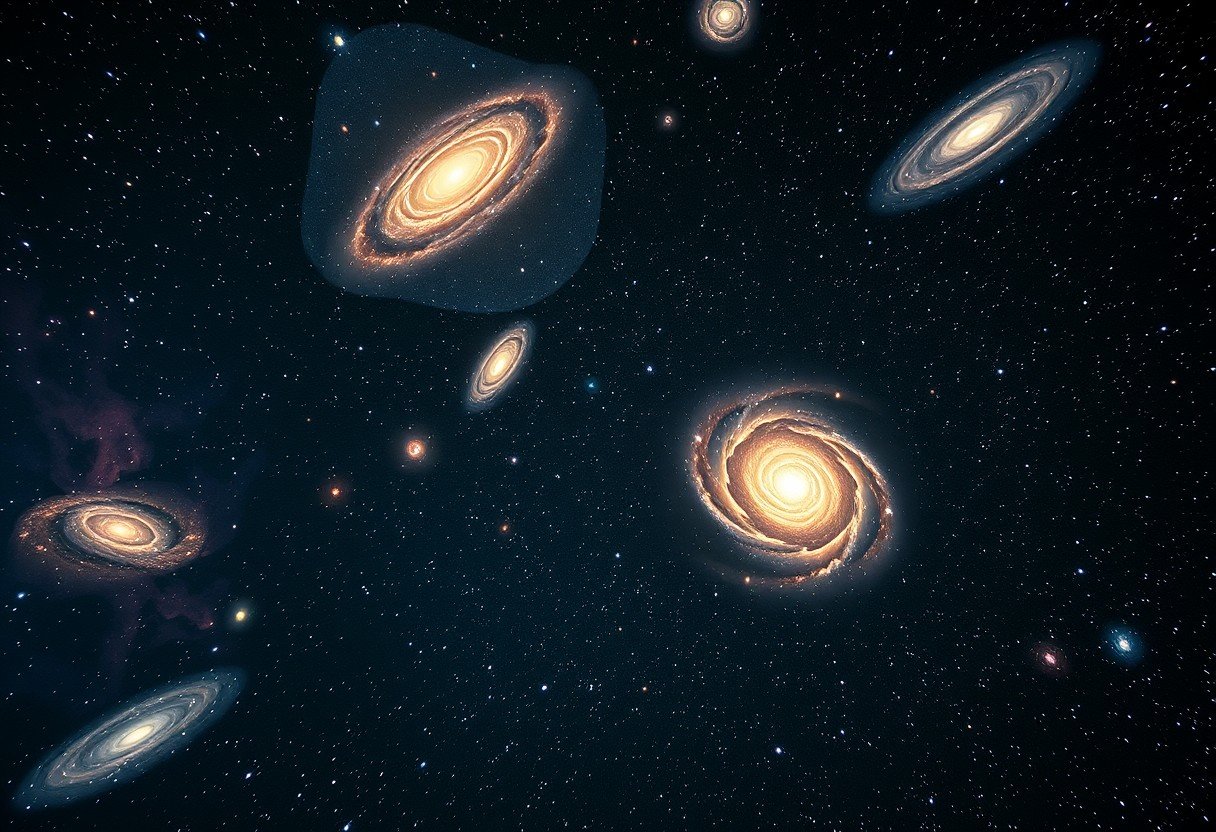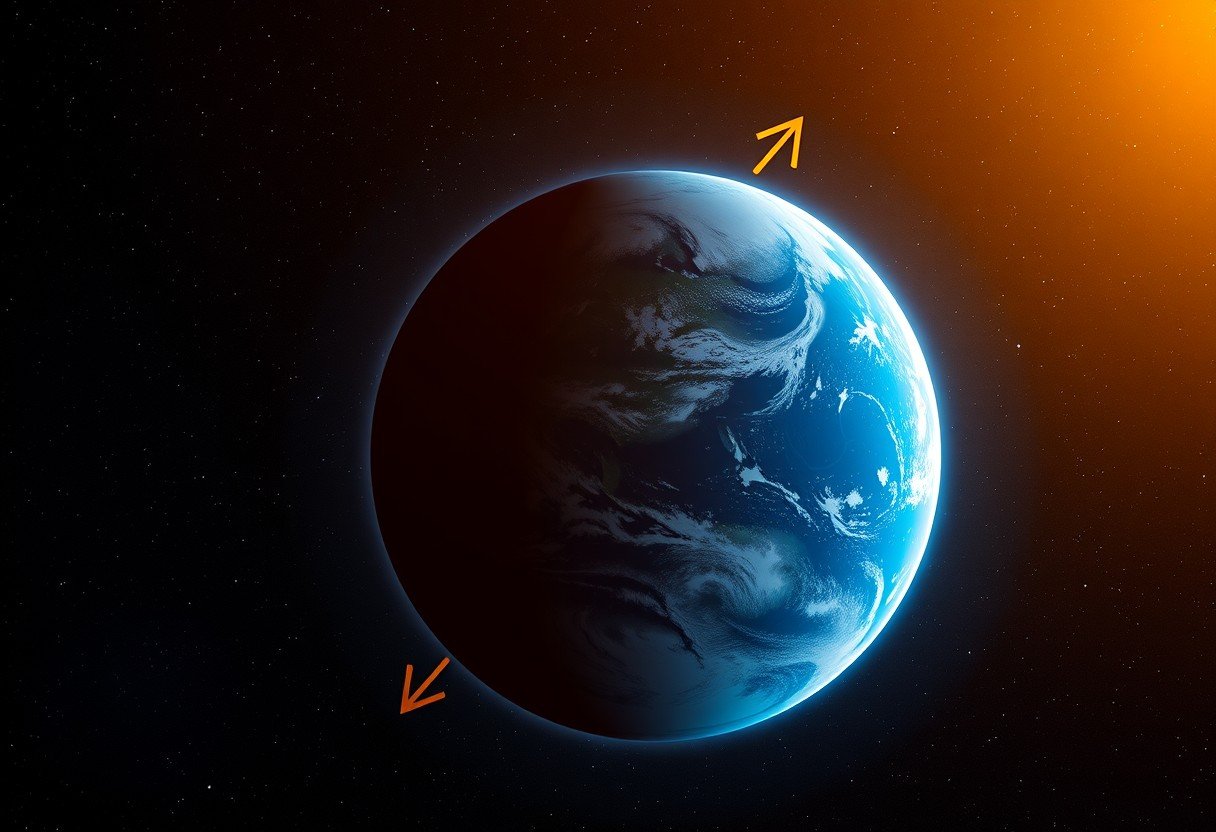When you look up at the night sky, it seems still. Yet, astronomers have discovered that almost every galaxy is moving away from our own. This isn’t because we’re special, but because the very fabric of space is expanding. This cosmic expansion, first observed through the reddening of galactic light, is a cornerstone of modern cosmology, pointing to the universe’s dynamic nature and its explosive beginning approximately 13.8 billion years ago.
The Discovery of an Expanding Universe
In the 1920s, astronomer Edwin Hubble made a groundbreaking observation that changed our understanding of the cosmos forever. He noticed that the light from distant galaxies was stretched to longer, redder wavelengths, a phenomenon known as redshift.
This wasn’t just a random occurrence. Hubble found a clear pattern: the farther away a galaxy was, the more its light was redshifted. This suggested that distant galaxies were moving away from us at incredible speeds.
This observation was the first concrete evidence that the universe was not static, as previously believed, but was in a state of constant expansion. This simple yet profound discovery laid the foundation for the Big Bang theory and our entire modern model of the universe’s history and evolution.
Understanding Hubble’s Law
Hubble’s discovery is summarized in a simple relationship now known as Hubble’s Law. It states that a galaxy’s speed moving away from us is directly proportional to its distance from us. In simpler terms, if Galaxy A is twice as far from us as Galaxy B, it will be moving away from us twice as fast.
This law provides astronomers with a powerful tool for measuring the vast distances across the cosmos. By measuring a galaxy’s redshift, they can calculate its speed, and from its speed, they can estimate its distance.
Think of it like baking raisin bread. As the dough rises, every raisin moves away from every other raisin. A raisin far away will appear to move faster than one nearby, but the dough itself is what’s expanding.
| Relative Distance | Apparent Recessional Speed |
|---|---|
| 1x (Close) | 1x (Slower) |
| 5x (Far) | 5x (Faster) |
| 10x (Very Far) | 10x (Much Faster) |
What Does Redshift Tell Us?
Redshift is the key piece of evidence for the expanding universe. When an object moves away from an observer, the light waves it emits get stretched out. This stretching shifts the light towards the red end of the electromagnetic spectrum, hence the name “redshift.” A greater redshift means a faster speed.
By analyzing the light from a distant galaxy, redshift allows astronomers to determine several key properties. It’s not just a measure of speed but a gateway to understanding the universe’s past.
Redshift helps scientists to:
- Calculate how fast a galaxy is moving away from us.
- Estimate the galaxy’s distance using Hubble’s Law.
- Look back in time, as light from highly redshifted galaxies has traveled for billions of years to reach us.
This single phenomenon provides a wealth of information, painting a picture of a universe that has been growing and changing for billions of years.
The Role of the Big Bang Theory
The observation that all galaxies are moving away from each other logically implies that they must have been much closer together in the past. If you rewind the cosmic clock, everything in the universe converges to a single, incredibly hot and dense point.
This is the central idea of the Big Bang Theory. It wasn’t an explosion in space, but rather the expansion of space itself from that initial state about 13.8 billion years ago. The expansion we see today is the ongoing aftermath of that event.
Further evidence for the Big Bang comes from the Cosmic Microwave Background (CMB). This is a faint glow of radiation that fills the entire universe, considered the leftover heat from the Big Bang. Its remarkable uniformity supports the idea that the universe began from a single event.
Is Dark Energy Speeding Things Up?
For a long time, astronomers expected that the gravitational pull of all the matter in the universe would gradually slow down its expansion. However, observations in the late 1990s revealed something shocking: the expansion is actually accelerating.
Scientists attribute this accelerated expansion to a mysterious force called dark energy. Dark energy is believed to be a property of space itself, acting as a repulsive force that pushes galaxies apart.
It is now estimated that dark energy makes up about 70% of the total energy content of the universe. While we don’t know what it is, its effects are profound, dictating the ultimate fate of our cosmos and driving galaxies further and further apart over time.
Why Some Galaxies are Moving Closer
While the overall trend is expansion, there are exceptions. On smaller, more local scales, the force of gravity can overpower the expansion of space. This is why stars remain within galaxies and galaxies group together into clusters.
Our own Milky Way galaxy is part of a collection called the Local Group. Within this group, gravity is the dominant force. For example, the Andromeda Galaxy, our closest large galactic neighbor, is actually moving toward us on a collision course set for about 4.5 billion years from now.
These local movements don’t contradict the expansion of the universe. They simply show that on cosmic scales, dark energy wins, while in dense neighborhoods like our Local Group, gravity still rules.
Frequently Asked Questions
Why do all galaxies appear to be moving away from us?
This is a result of the expansion of the universe. The fabric of space itself is stretching, carrying galaxies along with it. From any galaxy, it would look like all other distant galaxies are receding.
Does this mean the Milky Way is at the center of the universe?
No, there is no center of the universe. Because space itself is expanding, every point is moving away from every other point. An observer in any other galaxy would see the exact same phenomenon.
What is Hubble’s Law?
Hubble’s Law states that the speed at which a galaxy is moving away from us is directly proportional to its distance from us. The farther away it is, the faster it appears to recede.
How does dark energy affect galactic movement?
Dark energy is a mysterious force that counteracts gravity and causes the expansion of the universe to accelerate. It pushes galaxies apart at an ever-increasing rate, influencing the long-term fate of the cosmos.
Are all galaxies moving away from us?
No. While most distant galaxies are receding, galaxies that are gravitationally bound together in clusters, like those in our own Local Group, can move toward each other. The Andromeda Galaxy is a prime example, as it is on a collision course with the Milky Way.
What will happen to the universe in the future?
Based on current observations of accelerated expansion, the most likely scenario is the “Big Freeze.” In this future, galaxies will drift so far apart that they will become observationally unreachable, leading to a cold, dark, and empty universe.









Leave a Comment